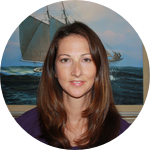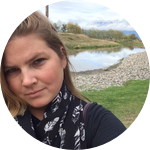About This Project
“Viking knitting” or nålbinding was a technique used by Vikings to make small textiles such as gloves, hats, and coin purses. As the Vikings made their way through Scandinavia, so did nålbinding. My project will examine the nålbinding textiles that were recovered with the 17th-century Swedish warship, Vasa. We will catalogue, and compare them to other samples throughout Scandinavia. These textiles give a glimpse into the changing techniques from nålbinding to "modern" knitting.
Ask the Scientists
Join The DiscussionWhat is the context of this research?
Due to the fragile nature of organics in the archaeological context, few examples of historical nålbindning exist. The technique seems to have been studied based on comparing needles recovered at Nordic excavations. Textiles recovered from the Vasa provide a larger assemblage of nålbindning and therefore a better picture of the craft, rather than just the technology to produce the textiles. Many papers focus on identifying on whether a fragment is knit or nålbundna and what specific fibers and colors are used, rather than identifying the stitches and their purpose. My research will identify and catalog of nålbundna textiles, as well as analyze the implications of those textiles on Scandinavian culture in English.
What is the significance of this project?
This study is significant because there is little published on nålbindning. Additionally, the fragments in the Vasa assemblage have not had their stitches cataloged, as of yet. This identification and analysis will assist future researchers in better understanding textile production in the 17th century. However, its primary function will be to examine the Maritime culture of 17th century Sweden and how that is portrayed and passed down within the craft industry, specifically the small textile production technique of nålbindning. The primary function of this project is to compare and analyze how nålbinding has changed over time.
What are the goals of the project?
The primary goal of this project is to help document nålbindning textiles that were recovered with the Vasa. I will work with the Vasa team from April 8th, 2019 to May 3rd, 2019 and follow their methodology for documenting textiles. While I am in Sweden, I will visit local museums to see comparative materials as well as continue to learn nålbindning so that I can better identify stitches and techniques.
Budget
This budget item is part of a larger masters thesis research trip. However, the bulk of my work will take place in Stockholm, Sweden. This budget item will fund my stay in a private room in a hostel for the duration of the time I am in Sweden.
I have received a $300 grant from my University that is defraying the cost of my flight to Europe.
Any additional funds collected will go toward transportation and food costs.
Any costs not covered, will be paid out of pocket.
Endorsed by
 Project Timeline
Project Timeline
I will arrive in Stockholm on April 7, 2019. From April 8 to May 3 I will be working at the the Vasa Museum and documenting nålbinding textiles, under the direction of the Vasa team. During this time, I will share some of my findings with my backers, as well as photos of the textiles. Following this month in Stockholm, I will travel through Scandinavia to view comparative materials and apply the same methodologies developed by the Vasa team to collect data.
Feb 27, 2019
Project Launched
Apr 07, 2019
Travel to Stockholm
Apr 15, 2019
Record at least one textile completely
May 03, 2019
Finish recording textiles at the Vasa Museum
May 21, 2019
Travel through Scandinavia for comparative materials
Meet the Team
Lindsey Howell Franklin
When I was a child, I was taught how to spin wool. This lead to an interest in textiles and their production techniques. Fast forward to my undergraduate field school, and I was able to SCUBA dive on 16th-century shipwrecks. The two fascinations came together when I was introduced to theVasa in my coursework. My 20+ years of experience with textile production and multiple experimental archaeology projects have lead me to develop a skill set that helps me to work with the scholars at the Vasa Museum to document textiles and to learn from these same scholars and professionals.
I earned my undergraduate degree at the University of West Florida, and I am seeking my Masters in Historical Archaeology there as well. In January, I presented a poster at the Society for Historical Archaeology exploring comparative conservation techniques for waterlogged archaeological textiles.
Additional Information
Cover photo is from Vasamuseet.se
Project Backers
- 45Backers
- 100%Funded
- $2,500Total Donations
- $55.56Average Donation


